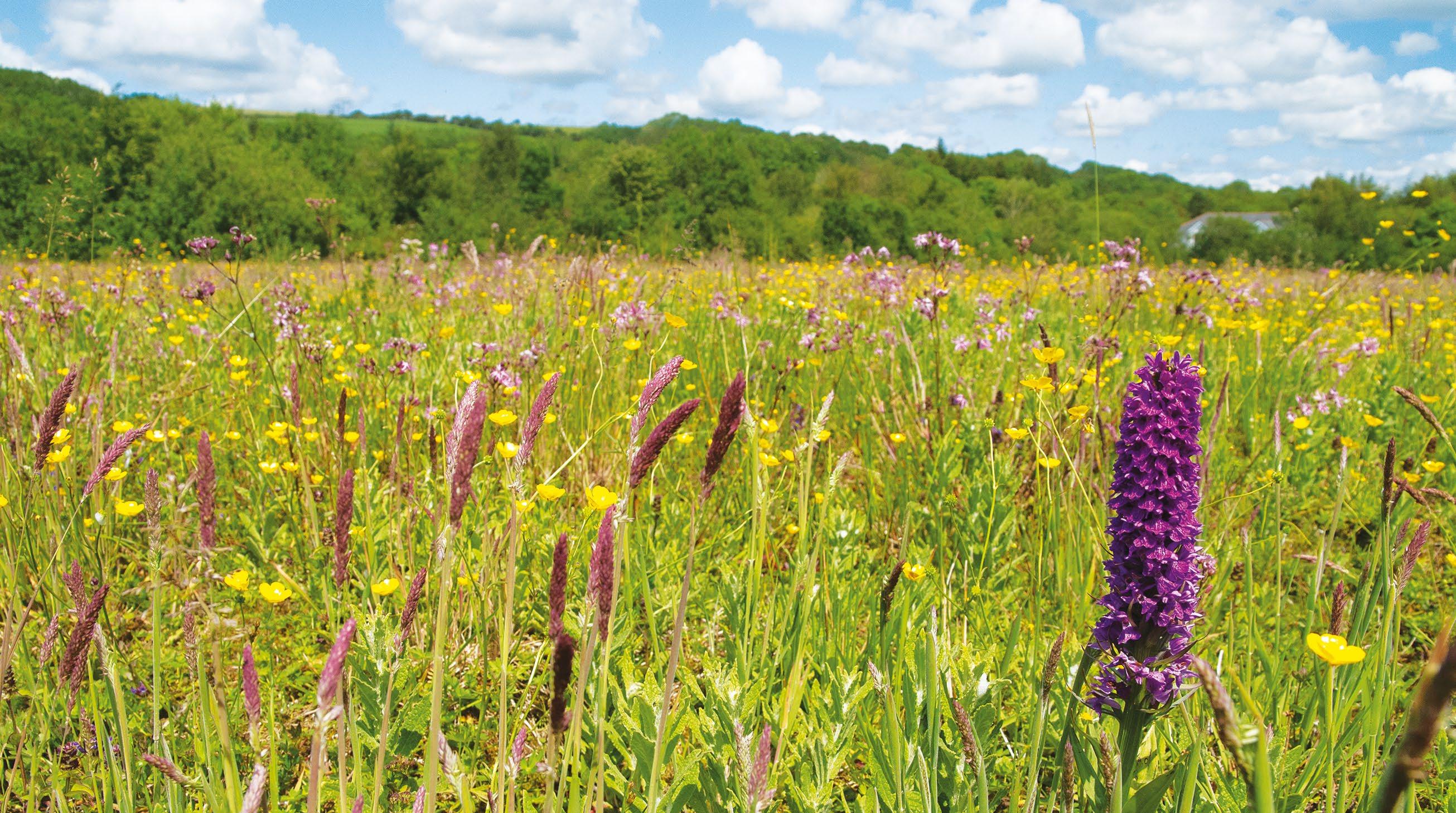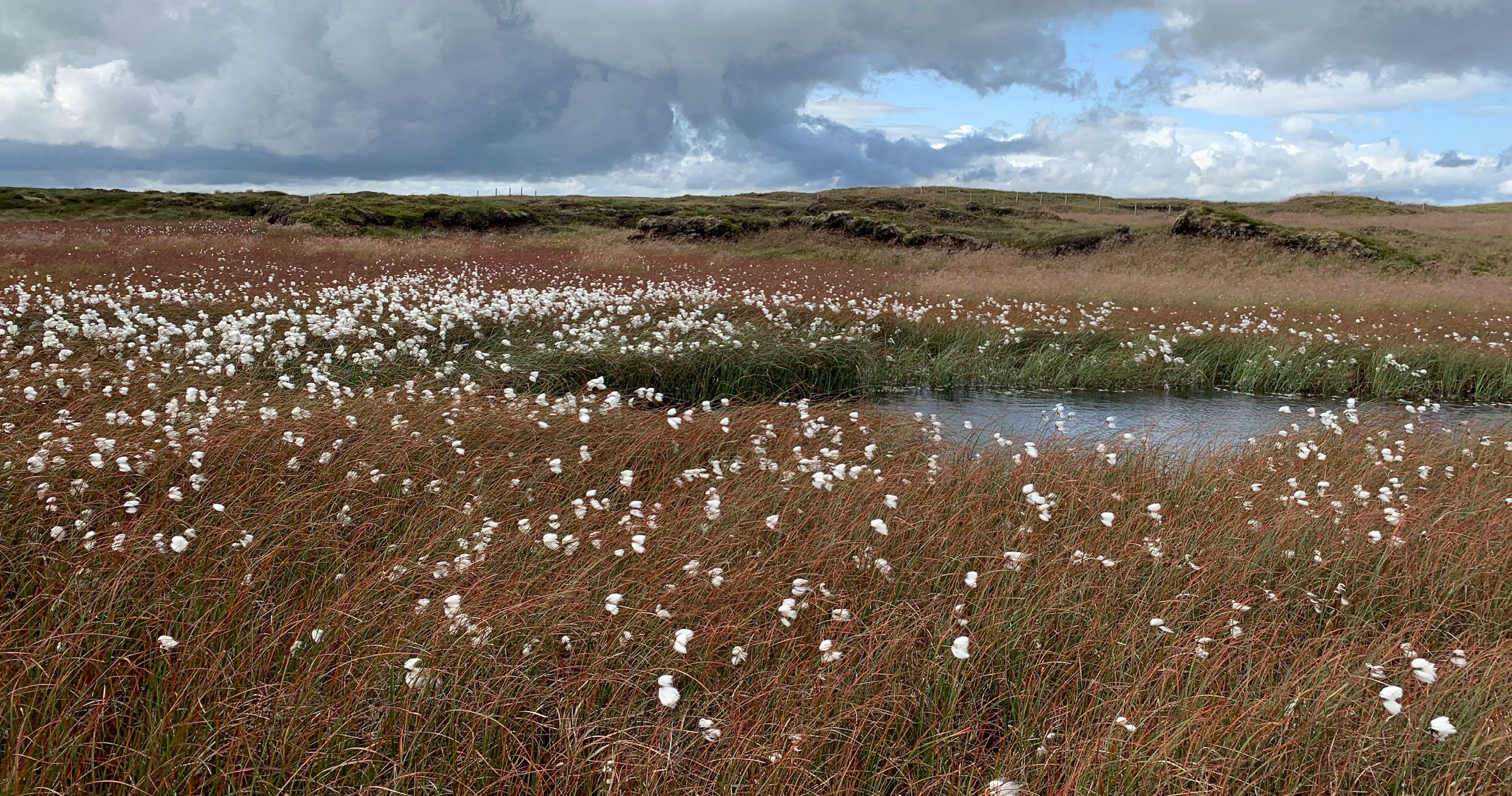Making Yorkshire Wilder

Working together for nature’s recovery






Nature-rich and resilient land and seascapes stretching from the sea to cities and fells with healthy, thriving ecosystems meeting the needs of people across Yorkshire.
Yorkshire’s nature plays many roles. A source of beauty and wonder, a place to be active, nature creates great places to live and work.
At the heart of it, nature underpins our economy, and even our very existence. Nature provides us all with the very fabric that sustains life – food, materials, water purification, and pollination.

Nature does not charge for her role; however, taking nature for granted has led to a crisis. Habitats and species are disappearing or degrading as we build on natural flood plains, destroy forests and degrade the water and soil, threatening our quality of life.
Yorkshire’s wildlife sites and protected areas are working to keep many species from disappearing, but they are too few and far between. We must make them the building blocks of a wider ecological network that will withstand climate change and other pressures, and deliver the services that we depend on.
We now understand more about how important nature is to our health, wealth and wellbeing. We need to help nature, so nature can help us.
There is a solution, but we must act urgently and together
1We have brought together the evidence needed to understand the state and health of Yorkshire’s nature. We now know:
n Which species, and where, are declining or increasing
n Which are Yorkshire stronghold species
n Which habitats are important to support a nature rich Yorkshire, and the status of those habitats
n How effective protected areas are, to ensure nature prospers
Crucially, we have a baseline to measure progress and monitor success, which we will publish and share.
However, we have seen species extinctions in Yorkshire and continue to experience species declines particularly of national rarities.
17 plant species have gone extinct in Yorkshire since before 1970
1 in 4 plant species have declined since before 2000
7% of our macro moth species have declined since 2000
Of the plants, birds and lepidoptera, nearly 300 are species of national conservation concern and around 130 have a particularly large part of their British distribution in our county, making us important custodians. We call these Yorkshire stronghold species.
35% of our breeding bird species have experienced a decline in their distribution between 1990 and 2010.


We know which habitats are especially important for our rarer and more threatened species and where we can focus interventions. But we also know that our wildlife sites and protected areas do not currently form a healthy and resilient ecological network able to halt and reverse the declines.
We want to work with others and develop a collective approach, to achieve a wilder future for Yorkshire.
2We must create a network of high quality, connected marine and terrestrial sites big enough to sustain the ecological and physical processes required to support thriving populations of species. We already know how to do this and must...

To increase the overall area of habitat, as well as the area of sites under long-term protection for nature, thereby contributing to a resilient ecological network.
Yorkshire’s nature-rich sites
Create
To provide the range and stability of conditions to support more species and sustain viable wildlife populations. Larger sites enable the restoration of functional habitats and promote more natural geological, ecological and hydrological processes, making them more resilient to climate change. Habitat creation and restoration at scale maximises wildlife benefits, enables innovative management, and is more cost effective.
To improve the condition and quality of habitats and sites through better habitat management. The ecological condition of habitats influences their ability to provide benefits to both nature and people - quality wildlife habitat, nature connection, access, ecological resilience, and nature-based solutions.
To enhance connections between the land, sea and wetlands, to support species movement and dispersal. Connectedness will be essential to facilitate climateinduced shifts in range. Both physically and functionally connected habitat can be achieved by enhancing and creating corridors or stepping stones between habitats.
scale: a landscape approach is required
3We must use a range of approaches from minimal interventions to direct actions, to create resilient, self-sustaining landscapes. This will include...
n Wilding or re-wilding, reducing actvity and enabling more natural processes
n Species-specific interventions for those with specialist or complex requirements which might not be met by a habitat approach
n Species translocations of species lost from an area – increasing species diversity or places where a species is found
n Reintroduction of ‘keystone’ species - to accelerate the re-establishment of natural processes, increase habitat quality and ecosystem complexity, and improve ecosystem services and functions
n Making adequate space and provision for species changing their geographical range in the face of climate change
4Everyone can be an agent of change to accelerate the recovery of species and transform landscapes.

Solving the global challenges of climate change and biodiversity loss requires fundamental change to the systems which brought us to this point. People and nature are part of, and connected within one system - people and nature shape each other. A challenge is to support and empower people to engage in activities that create the conditions for all life to thrive - net positives for the planet, Yorkshire’s people and wildlife.
Through Team Wilder - a growing national movement of people who care about the environment – we will harness the collective energy and skills of people across Yorkshire - inspiring 1 in 4 to connect with nature and take meaningful action to drive nature’s recovery.
For nature, for communities, for Yorkshire
Regenerate landscapes with a diversity of species using whole-system thinking
People will be the catalysts for nature to regenerate

Local Nature Recovery Strategies (LNRS) promise to co-ordinate action and investment in nature’s recovery. There will be four LNRS for Yorkshire which will identify and map the best places to focus our efforts. The magic lies in what we collectively then do with this information.
Truly successful nature recovery across Yorkshire is achievable but only if...
n We have strong communication and collaboration between neighbouring authorities
n Everyone involved in nature recovery in Yorkshire contributes to the LNRS
n Farmers, landowners and land managers are supported to play their part
The Trust is uniquely placed to facilitate and support the development of high quality LNRS across Yorkshire
Offer insight from our State of Yorkshire’s Nature analysis and mapping on the priorities for wildlife across Yorkshire - learning from Yorkshire Wildlife Trust and partners’ case studies
Explore challenges and opportunities for delivery drawing upon best practice
Play our part in delivering ambitious LNRS that directly help nature’s recovery
n LNRS are updated and integrated into our tools for nature recovery (e.g. Environmental Land Management Scheme (ELMS), Biodiversity Net Gain (BNG), environmental markets)
n There is a continuous cycle of collecting, using, building and re-integrating the data
Provide opportunities for those working on LNRS to come together, learn from best practice and each other, and facilitate opportunities to collaborate across boundaries
Use our position to embed LNRS in wider environmental, economic, and social policy making and plans
Think big! – areas for wildlife must be bigger, better and more joined up if we want a resilient, sustainable future for wildlife
Be led by evidence and expert knowledge – to have the greatest impact for nature
Work with partners – collaborate to accelerate nature’s recovery, sharing expertise, capacity and resources; design ways to assist others who also seek to enable nature to recover on land and sea
Provide a voice for Yorkshire’s nature – seeking to influence policy and practice, including Local Nature Recovery Strategies
Facilitate collective action across Yorkshire’s communities – no single organisation, community, business or Government agency can deliver nature’s recovery alone
Explore bold and innovative methods to accelerate ecological recovery and transformation
Ensure our nature reserves and land assets are a strong foundation for nature’s recovery
Yorkshire Wilder
Our position on the climate and ecological crises

Early summer 2023
State of Yorkshire’s Nature
Yorkshire Wildlife Trust’s contribution to data and insight across the county
Summer 2023
Yorkshire Wildlife Trust’s strategy for nature’s recovery
Articulate our aspirations for nature and set a clear direction for nature’s recovery across Yorkshire
Late summer 2023
Yorkshire’s nature is in recovery
Towards 2030 and beyond
SHUTTERSTOCKWe need a widespread movement to drive change at the pace and scale now necessary for nature’s successful recovery.
This is a challenging task.
Fortunately, there is leading knowledge, expertise and passion in Yorkshire’s community to draw on.


By sharing our approach, data and expertise, we hope to galvanise aspirations for nature’s recovery in Yorkshire.

We want this document to catalyse conversations and support opportunities for collective working. We hope to strengthen our impact for wildlife’s recovery and restore healthy ecosystems - for people, places and nature - across Yorkshire.
www.ywt.org.uk/driving-natures-recovery
is the only charity entirely dedicated